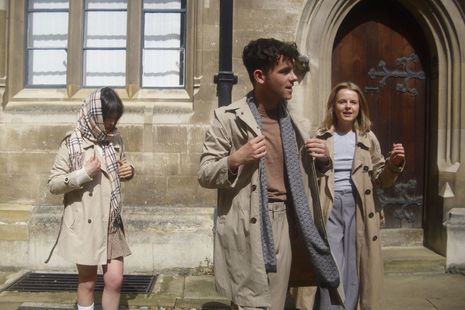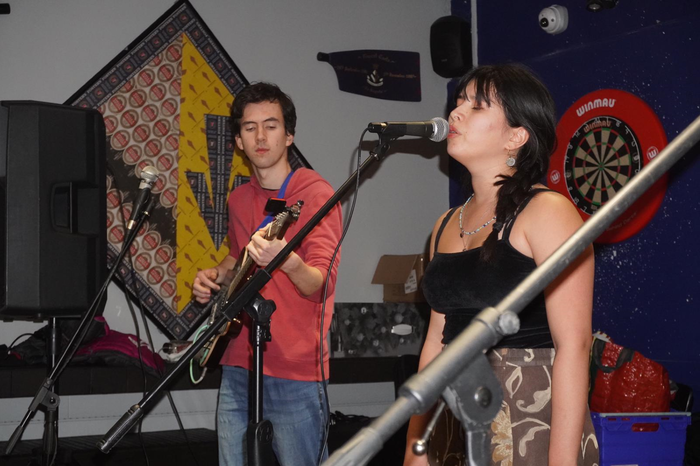Class and closeted identities: how do fits fit into our cultures?
Joanne Yau explores how students shift their style between Cambridge and home

Closet transformation takes many forms: from winter to summer, from Sidgwick to home and, not least, when coming out of the closet. And it isn’t always easy. To quote one Camfesser: “transitioning from sidge boy back to nldn chav when I go home is such a mindf*ck”.
While this Camfession was likely an exaggeration, for many students, Cambridge’s fashion scene differs drastically from their experiences at home. “You find a lot more alternative styles and a whole kind of ‘trendy but edgy’,” Juned Mudith describes. Coming from a working-class family in the London Borough of Brent, Juned notes how, at home, “fashion is dictated much more by cultural and religious beliefs,” although this has changed in recent years. Tracksuits have become a staple, whether it be young boys wearing them to Friday prayer at the mosque or a casual day in the high street.
“For many students, Cambridge’s fashion scene differs drastically from their experiences at home”
“I have definitely found myself changing my own style once coming to Cambridge,” admits Juned. Yet he believes this is less about conforming to class culture than being exposed to a wider variety of styles. Lambswool scarves and quarter zips are among the items he has adopted, the latter of which have certainly won the hearts of many Union hacks. Alongside quarter zips, UGG and Dr. Martens boots constitute other “quiet luxury” staples among Cambridge students.
Nonetheless, not everyone shares this experience. “I have found myself dressing differently or at least really wanting to,” says Holly Higham, a fellow “sidge girl” from Hastings: “everyone around me seems to have interesting or high-quality clothing items”. She points to class culture and the University’s institutional prestige to explain her subconscious conformity to Cambridge’s fashion culture. For her, Cambridge’s fashion conventions reflect a desire to project status: “there [is] always something about [Cambridge students] that is either unique or neat or sophisticated”.
Alex Bonoldi also saw his closet evolve upon leaving his socioeconomic surroundings. Raised in a low-income household, Alex explains that he used to “dress quite simply” until attending private school on a bursary. He observes similarities in the way people dress at private schools and Cambridge, which he describes as “classy and tasteful”. Long coats, leather shoes and jewellery, which are abundant in Cambridge, are also “sort of the uniform for private school kids”. But Alex also highlights an immense change over the last decade: the rise of second-hand clothing.
“The relationship between fashion and class has become increasingly blurred among younger generations”
While “quiet luxury” remains “loud” at times, the relationship between fashion and class has become increasingly blurred among younger generations. The popularisation of thrifting has made the “old money” look more financially achievable. That is not to say class differences have been erased; they have just become more subtle. “You become aware of subtle class differences such as someone matching their ‘£5 Vinted top’ with an expensive necklace that is either real gold, real silver and/or has valuable gemstones,” notes Juned.
“[It] does not change the fact that the upper-class stereotype of boys in Schöffels is something funny,” he jokes, “However, when working-class people and people of colour put on things such as puffer jackets and tracksuits, they are portrayed as ‘scary roadmen chavs’.”
The caricature of the “chav” not only denotes a lack of economic capital, but also of cultural and social capital. Hence, while the thrifting bandwagon has somewhat democratised the fashion experience, it’s worth questioning whether it has increased conformity to cultural norms. Has Vinted merely encouraged the assimilation of “quiet luxury” into the closets of so-called “chavs” or has it also dismantled the “tracksuit roadman” stereotype?
“Even in the UK, not everyone can freely express themselves”
For others, transforming one’s closet starts with coming out of it. A.S. (initials) attended a Muslim school in Brunei growing up. Despite being “gay as hell” now, A.S. recalls the difficulties of expressing his queer identity at home, where “being gay was just frowned upon and [a] taboo”. “Dressing up is so scary at home, it’s that constant stare and judgement,” he adds, “nowhere is safe”.
In the UK, though, A.S. can free his identity and closet: “I dress much more myself [in Cambridge], which is much more androgynous.” As a fashion student, he understands the communicative power of clothes: “it’s like a shadow limb that helps us perceive one another”.
Yet, even in the UK, not everyone can freely express themselves. Another student of Muslim upbringing shared his journey to discover his homosexuality. Though born and raised in the UK, his culturally rigid and religious household suppressed his authentic expression.
“The transition [of my closet in] Cambridge represented a profound liberation,” he explains. For him, returning home during spring break was not only a transition from overcoats to linen shirts, but a temporary farewell to clothes that “don’t neatly fit [into] the concept of masculinity and social expectations of what a man should wear”.
The culture around us curates our closets as much as we do. As an exterior analogue to our interior worlds, the closet changes and captivates. It’s constraining for some but liberating for others. From glowing up to coming out, this sacred place contains the materialisation of much of our existentialist confessions. So, next time, consider confessing to your closet instead of Camfess and embarking on a self-discovery journey.
 News / Cambridge student numbers fall amid nationwide decline14 April 2025
News / Cambridge student numbers fall amid nationwide decline14 April 2025 News / Greenwich House occupiers miss deadline to respond to University legal action15 April 2025
News / Greenwich House occupiers miss deadline to respond to University legal action15 April 2025 Comment / The Cambridge workload prioritises quantity over quality 16 April 2025
Comment / The Cambridge workload prioritises quantity over quality 16 April 2025 Sport / Cambridge celebrate clean sweep at Boat Race 202514 April 2025
Sport / Cambridge celebrate clean sweep at Boat Race 202514 April 2025 Features / The TikTok college: using social media in access and outreach15 April 2025
Features / The TikTok college: using social media in access and outreach15 April 2025






